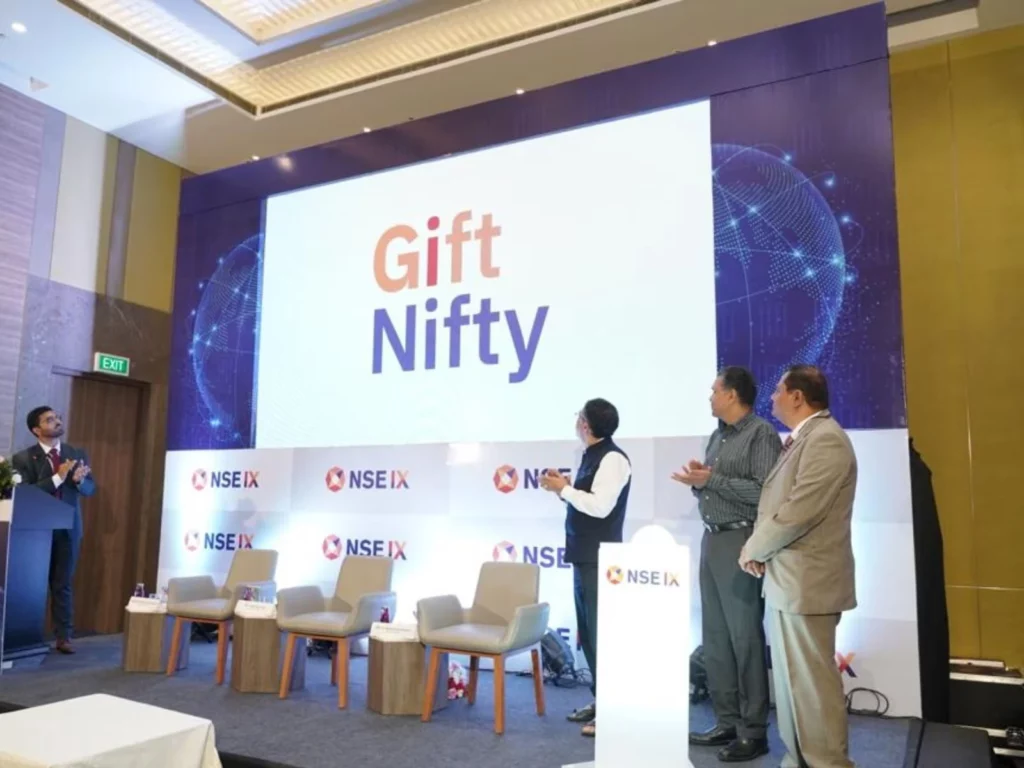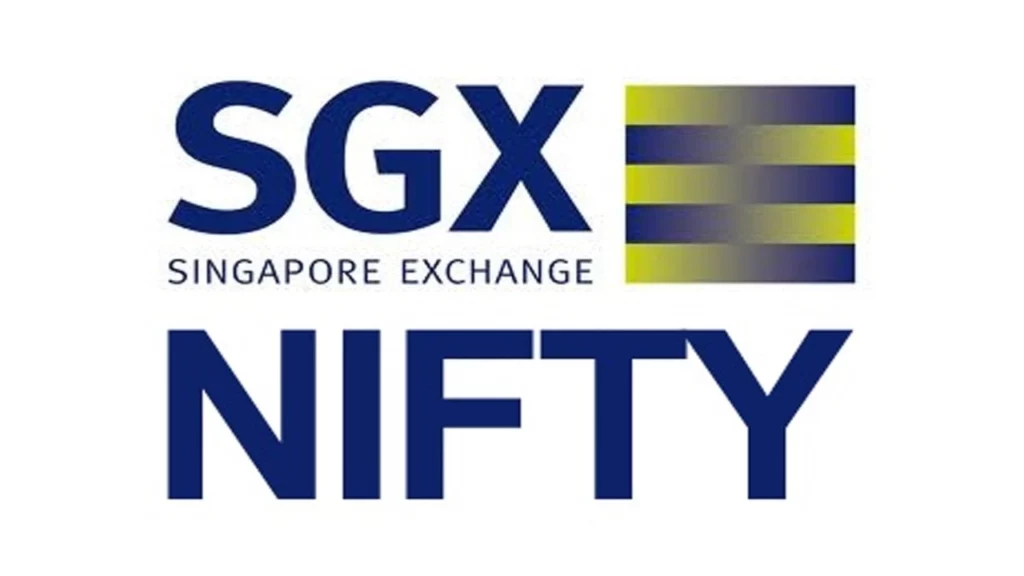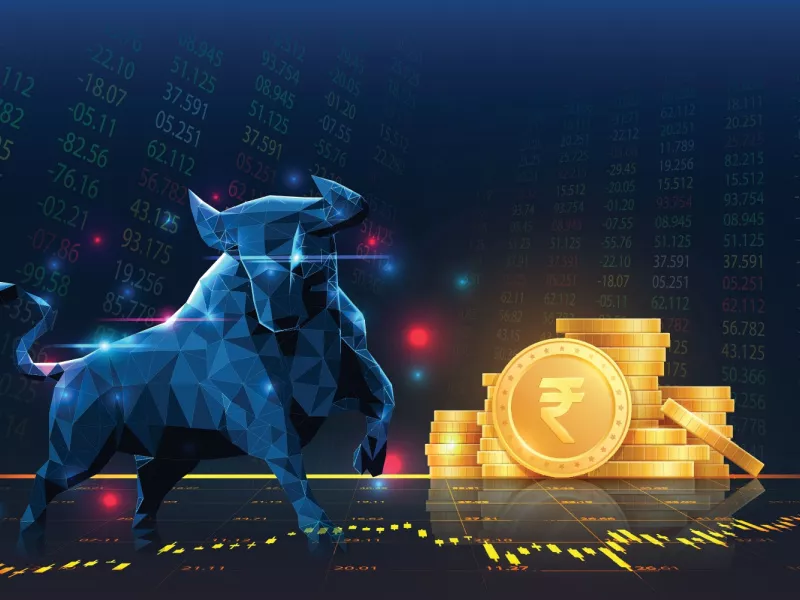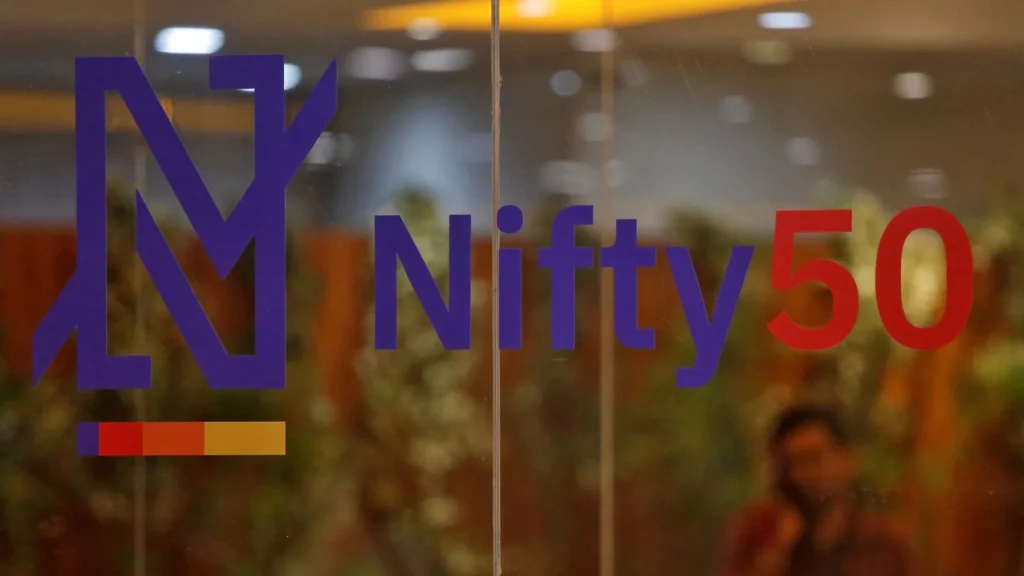If you’ve ever dabbled in trading, you probably know how important stock market indices are in navigating the financial seas.
They’re like compasses that guide traders toward their financial goals. But one name that’s been making waves recently is GIFT Nifty.
What is it, you ask? That’s what I’m here to explain—not just briefly but in a way that leaves no stone unturned.
By the time you finish reading this, you’ll feel like a pro when it comes to GIFT Nifty.
So, grab your favorite cup of coffee (or tea, if that’s your thing), and let’s dive into the fascinating world of GIFT Nifty, step by step.
What is GIFT Nifty?
At its core, GIFT Nifty is a futures-based derivative index that allows traders across the globe to speculate on the performance of India’s stock market.

It operates under the NSE International Exchange (NSE IX), which is part of the larger Gujarat International Finance Tec-City (GIFT City).
In simpler terms, think of GIFT Nifty as a financial bridge that connects international traders to India’s financial markets.
It’s like giving global investors a front-row seat to participate in India’s growth story.
But there’s more to it than just being a trading index.
GIFT Nifty is essentially the successor to the widely popular SGX Nifty, which was a darling of international traders.
The Origin of GIFT Nifty
Let’s rewind a bit and understand how GIFT Nifty came into existence.
Its origin story is as much about market strategy as it is about shaping the future of India’s financial ecosystem.
The Pre-GIFT Nifty Era: SGX Nifty’s Dominance
Before GIFT Nifty, there was SGX Nifty, a highly popular derivative product traded on the Singapore Exchange.
It allowed global traders, especially those outside India, to speculate on the Nifty50 index—India’s benchmark stock market index—without actually trading on Indian soil.

This setup was immensely convenient for international investors. Why?
- Ease of Access: Investors didn’t need to deal with India’s regulations, market hours, or even open Indian trading accounts.
- Global Time Zone Advantage: SGX Nifty’s extended trading hours made it ideal for investors in markets like Europe and the US to engage without adjusting to India’s market timings.
However, this convenience came at a cost—India’s financial ecosystem missed out on significant trading volumes and revenue streams.
The trades, while based on an Indian index, were happening entirely outside India’s jurisdiction.
India’s Vision: Why the Shift Was Needed
India’s financial regulators, led by the Securities and Exchange Board of India (SEBI) and the National Stock Exchange (NSE), realized they needed to bring this activity back home.
Why let such substantial market activity flourish outside the country when it could be centralized in India?
But there was more to this vision:
- Establishing GIFT City as a Global Financial Hub: The Gujarat International Finance Tec-City (GIFT City) was developed as a state-of-the-art financial hub designed to rival the likes of London, Dubai, and Singapore.
Housing international exchanges like the NSE IX (International Exchange), GIFT City represented India’s ambition to become a global financial powerhouse.
However, GIFT City needed flagship trading products to establish its credibility.
Moving SGX Nifty operations to GIFT City was a logical choice to boost its global standing. - Retaining Revenue and Liquidity: When trading activity happens on foreign exchanges like SGX, a significant portion of transaction fees, clearing fees, and related revenues is retained by the foreign exchange.
By shifting this activity to GIFT City, India could reclaim this revenue. - Market Transparency and Regulation: SGX Nifty, while efficient, operated under Singapore’s regulatory framework.
India wanted to ensure that trading in its benchmark index adhered to its own financial regulations, ensuring greater oversight and control. - Lowering Costs for Traders: The move to GIFT City allowed for a more cost-efficient structure. Lower transaction and clearing fees became a reality under NSE IX, making it a win-win for both traders and regulators.

The Transition: From SGX Nifty to GIFT Nifty
In July 2023, after extensive negotiations between the National Stock Exchange (NSE) and the Singapore Exchange (SGX), a monumental decision was made: the SGX Nifty contracts would no longer be traded independently on the Singapore Exchange.
Instead, these contracts were shifted to NSE International Exchange (NSE IX) in the GIFT City of Gujarat’s Gandhinagar, marking the birth of GIFT Nifty on 3rd of July, 2023.
This wasn’t just a name change. It was a fundamental restructuring of how Nifty futures were accessed by global traders.
- Dual Jurisdiction Agreement: To make the transition seamless, a connect model was introduced. SGX became a clearing and settlement partner, allowing its existing clients to continue trading Nifty futures through GIFT City. This ensured there was no disruption for global traders who were used to the SGX platform.
- Unified Ecosystem: With GIFT Nifty, all trading activity related to India’s Nifty50 index came under the NSE umbrella. This consolidation reduced redundancies, increased transparency, and created a more robust trading ecosystem.
What Makes This Shift Significant?
The move wasn’t just about changing the trading venue; it represented a paradigm shift in how India’s financial markets connect with the global economy.
- Strategic Positioning: By housing GIFT Nifty in GIFT City, India strengthened its position as a key player in the international financial landscape.
Traders worldwide now look at GIFT City not just as an alternative but as a preferred destination for derivatives trading. - Investor Confidence: The transition also demonstrated India’s ability to negotiate and execute high-stakes deals with international partners, boosting investor confidence in its financial governance.
- Economic Implications: The revenue, liquidity, and talent generated by GIFT Nifty directly contribute to India’s economic growth. The presence of international financial firms in GIFT City further amplifies its economic impact.
The Bigger Picture: GIFT Nifty as a Catalyst
GIFT Nifty isn’t just a replacement for SGX Nifty—it’s a stepping stone for India’s larger financial ambitions.
The transition has positioned GIFT City as the go-to hub for international financial services, paving the way for more innovative financial products and deeper global integration.
In a nutshell, GIFT Nifty isn’t just an index—it’s a symbol of India’s financial evolution.
From reclaiming market activity to creating a globally competitive financial ecosystem, its origin story is a testament to India’s growing influence in the global financial markets.
And this, my friend, is why understanding GIFT Nifty isn’t just about trading—it’s about witnessing history in the making.
Why Was SGX Nifty Rebranded to GIFT Nifty?
Let me tell you, the rebranding of SGX Nifty to GIFT Nifty wasn’t just about slapping a new name on an old product.
It was a calculated move, one that underscores India’s ambitious vision to become a global financial powerhouse.
This transition is deeply tied to the evolution of GIFT City (Gujarat International Finance Tec-City), a state-of-the-art financial hub designed to compete with global giants like Singapore, London, and Dubai.
But why make such a significant shift? Let’s break it down in detail so you can fully grasp the logic behind this game-changing move.
1. Boosting GIFT City’s Global Positioning
GIFT City is more than just a location; it’s a statement. The Indian government has poured immense resources into developing GIFT City as a world-class financial and IT hub.
Think of it as India’s answer to the financial districts of New York or Singapore.
By migrating SGX Nifty to GIFT City and rebranding it as GIFT Nifty, the government effectively consolidated a major trading activity under its flagship financial zone.
The idea here is simple: if you want to trade Indian stock market derivatives like the Nifty50 index, you’ll now need to look towards GIFT City.
This move not only puts GIFT City on the map but also attracts global attention, establishing it as a central point for India-focused trading.
Over time, this consolidation strengthens India’s ability to compete globally in financial services, bringing more foreign investments and partnerships into the fold.
2. Regulatory Alignment and Sovereignty
One of the biggest challenges with SGX Nifty was its regulatory jurisdiction.
Since SGX Nifty was traded on the Singapore Exchange, it operated under Singapore’s financial regulations, making it challenging for Indian regulators to fully oversee these trades.
By moving to NSE IX in GIFT City, GIFT Nifty now operates under Indian regulations. This brings several advantages:
- Full Regulatory Oversight: The shift allows India’s market regulator, SEBI (Securities and Exchange Board of India), to monitor and regulate trading activities more effectively.
- Taxation Benefits: Indian authorities can now ensure that trading revenues are appropriately taxed under Indian laws.
- Data Security: Trading data remains within Indian jurisdiction, reducing the risks of data leakage or misuse.
This alignment is not just about compliance; it’s about reclaiming control and ensuring that India’s financial markets are managed in a way that benefits the Indian economy first.
3. Cost Efficiency for Traders
Trading on SGX Nifty came with its own set of costs—higher transaction fees, foreign exchange conversion charges, and other overheads tied to trading outside India.
GIFT Nifty significantly lowers these barriers.
Here’s how:
- No Forex Hassles: Since GIFT Nifty operates in INR and USD, traders can avoid additional forex conversion fees that were inevitable with SGX Nifty.
- Lower Transaction Costs: NSE IX offers competitive transaction fees, making GIFT Nifty a cost-effective choice for global investors.
- Centralized Clearing Mechanism: With centralized clearing under the NSE, costs related to clearing and settlement are streamlined, benefiting traders directly.
For traders, these cost savings are more than just numbers—they make a tangible difference in profitability, especially for those trading at high volumes.

4. Enhanced Market Transparency
One of the criticisms of SGX Nifty was the lack of transparency compared to India’s domestic markets.
Traders often complained about discrepancies in pricing, delayed updates, and limited oversight. With GIFT Nifty, these concerns are addressed head-on.
Since GIFT Nifty operates under the NSE’s umbrella, the market infrastructure is now far more robust and transparent:
- Real-Time Data: GIFT Nifty offers real-time updates and better synchronization with the Nifty50 index, eliminating lags and discrepancies.
- Regulated Trading Environment: Traders can trust the system, knowing it operates under SEBI’s strict regulatory framework.
- Liquidity Boost: The move has also increased participation, improving liquidity and reducing bid-ask spreads, which benefits all traders.
Transparency fosters trust, and trust is the cornerstone of any successful trading ecosystem.
GIFT Nifty’s transparency ensures traders can make informed decisions with confidence.
A Bold Vision for the Future
If I had to sum it up, this rebranding is about India playing the long game.
By moving SGX Nifty to GIFT City and transforming it into GIFT Nifty, India has made a strategic play to:
- Strengthen its position as a global financial leader.
- Ensure Indian financial data and profits stay within its borders.
- Attract more foreign investors to its shores through a robust, transparent, and cost-effective trading ecosystem.
This isn’t just a name change; it’s a paradigm shift.
For traders, GIFT Nifty opens up a world of opportunities, providing global access to Indian markets with all the benefits of operating under India’s regulatory framework.
And for India? It’s a giant leap forward in solidifying GIFT City as a financial hub that rivals the best in the world.
The question isn’t “Why rebrand SGX Nifty to GIFT Nifty?” but rather, “Why not?”
How Does GIFT Nifty Work?
Understanding how GIFT Nifty operates is key to leveraging its full potential as a trading instrument.
At its heart, GIFT Nifty functions as a futures contract, which essentially means you’re speculating on the future value of the Nifty50 index—India’s benchmark stock index. Let’s break this down step by step for better clarity.
GIFT Nifty as a Derivative
The term “derivative” might sound intimidating, but it’s simpler than you think. A derivative is a financial instrument that derives its value from an underlying asset.
In the case of GIFT Nifty, that asset is the Nifty50 index, which comprises 50 of the largest and most actively traded companies listed on the National Stock Exchange (NSE) in India.

When you trade GIFT Nifty, you’re not buying or selling the actual shares of these companies.
Instead, you’re making a bet on how the Nifty50 will perform in the future—whether it will rise or fall—over a specific period.
For instance, if you believe the Nifty50 index will increase in value, you’ll go long on a GIFT Nifty futures contract.
Conversely, if you think it will decrease, you’ll go short. The goal is to profit from the price difference between when you enter and exit the contract.
Key Features of GIFT Nifty Futures
1. Contract Specifications
Every GIFT Nifty futures contract comes with predefined terms:
- Lot Size: Each contract represents a fixed lot size of 50 units. This means that any price movement in the Nifty50 index will affect all 50 units within the contract.
- For example, if the index moves up by 1 point, your contract’s value increases by ₹50 (1 point × 50 units). Similarly, a downward movement of 1 point results in a ₹50 loss.
- Tick Size: The smallest price movement allowed in GIFT Nifty is 0.5 points, known as the tick size.
- This translates to a minimum price change of ₹25 per contract (0.5 points × 50 units).
These specifications make GIFT Nifty a highly liquid and dynamic trading tool, appealing to traders who thrive on precise market movements.
2. Expiry Cycles
GIFT Nifty offers flexibility with its expiry cycles, which define the time frame for which a contract is valid. Traders can choose from:
- Monthly Expiry: Contracts expire at the end of each calendar month.
- Quarterly Expiry: These contracts run for three months before expiration, offering a medium-term investment horizon.
- Half-Yearly Expiry: For those who prefer a longer-term strategy, half-yearly contracts are also available.
Each expiry cycle caters to a specific trading style:
- Short-Term Traders: Monthly contracts are ideal for those who want to capitalize on quick market movements.
- Swing Traders: Quarterly contracts provide more breathing room for price fluctuations.
- Long-Term Investors: Half-yearly contracts suit those who anticipate broader market trends over an extended period.
It’s important to note that once a contract expires, you’ll need to either settle it or roll it over to a new contract if you wish to continue your position.
3. Global Accessibility
One of the standout features of GIFT Nifty is its global appeal.
Unlike traditional Indian stock market instruments, GIFT Nifty is designed to cater to international traders and institutional investors. Here’s how:
- Ease of Access: Investors from around the globe can trade GIFT Nifty without needing direct exposure to Indian markets. This is especially beneficial for those who want to participate in India’s economic growth story but face regulatory or logistical hurdles in accessing Indian exchanges directly.
- Extended Trading Hours: The 21-hour trading window (split into two sessions) ensures that traders from multiple time zones can participate seamlessly. For instance, an investor in London or New York can trade GIFT Nifty during their local market hours without waiting for the Indian stock markets to open.
- Dual Currency Support: GIFT Nifty supports trading in USD and INR, making it convenient for international investors to transact without worrying about currency conversion issues.
This global accessibility makes GIFT Nifty a bridge between India’s financial markets and the rest of the world.
It’s like giving foreign investors a backstage pass to India’s thriving economy.
GIFT Nifty Trading Timings
One of the standout features of GIFT Nifty is its extended trading hours, which span 21 hours a day.
These timings set it apart from other indices, offering a level of flexibility that truly caters to both domestic and international traders.
In brief, the GIFT Nifty trading time is split into two sessions as follows:
- First Session – 6:30 AM to 3:40 PM IST
- Second Session – 4:35 PM to 2:45 AM IST (next day)
Let’s dig deeper into why these timings matter, how they’re structured, and what they mean for traders like you and me.

Why Do GIFT Nifty’s Trading Hours Stand Out?
Most stock exchanges around the world operate on standard business hours. For example, the NSE in India opens at 9:15 AM and closes at 3:30 PM IST.
This leaves little room for traders to respond to major global events that often unfold after the Indian markets close.
GIFT Nifty solves this problem by providing a near-continuous trading window that aligns with international time zones.
Whether it’s the opening bell in Tokyo, the mid-day hustle in London, or the late-night action in New York, GIFT Nifty is designed to keep you in the game.
This extended window isn’t just a convenience—it’s a strategic advantage, especially in today’s interconnected financial world where global market movements ripple across borders in realtime.
How Are GIFT Nifty’s Trading Hours Structured?
The trading day is divided into two distinct sessions, each tailored to maximize accessibility and efficiency:
1st Session: 6:30 AM to 3:40 PM IST
The first session begins bright and early, overlapping with the closing hours of the US markets and the opening of Asian markets.
This window is critical for traders looking to adjust their positions based on overnight news or developments in the US markets.
Imagine this: a major tech company announces earnings after the US markets close.
By 6:30 AM IST, traders on GIFT Nifty can already start reacting, positioning themselves ahead of the Indian market’s opening.
2nd Session: 4:35 PM to 2:45 AM IST (Next Day)
After a brief pause, the second session kicks off in the evening, just as the Indian markets close. This is where things get exciting for traders who want to align with Europe’s trading hours and catch the opening hours of the US markets.
This session is particularly useful for traders who:
- Monitor Global Indices: React to movements in the Dow Jones, Nasdaq, and other key benchmarks.
- Speculate on News: Take positions based on late-evening news or announcements from international markets.
For instance, if a central bank like the US Federal Reserve announces an interest rate change late in the evening IST, traders on GIFT Nifty can immediately act, rather than waiting for the NSE to open the next morning.
Advantages of GIFT Nifty’s 21-Hour Trading Window
The extended trading hours aren’t just a technicality—they’re a game-changer. Let’s explore the advantages in detail:
- Global Market Synchronization: GIFT Nifty operates across multiple time zones, giving traders the ability to adjust their positions based on real-time global market developments. Whether it’s a currency fluctuation, commodity price change, or geopolitical event, you’re no longer limited by the NSE’s trading hours.
- Flexibility for International Investors: For traders in Europe, the Americas, or Asia-Pacific, GIFT Nifty’s timings align perfectly with their workday. This makes it easier for global investors to actively participate in India’s market story without having to stay awake at odd hours.
- Reduced Gap Risk: Gap risk occurs when markets open significantly higher or lower due to events that happen outside trading hours. With GIFT Nifty, this risk is minimized as traders have the ability to react almost instantly to global news.
- Increased Liquidity: Longer hours naturally attract more participants, boosting liquidity. This creates tighter bid-ask spreads, making it cost-effective for traders to enter and exit positions.
- Hedging Opportunities: Traders can use GIFT Nifty’s extended hours to hedge their portfolios, especially during periods of high volatility. For example, if the US markets show signs of turbulence, you can quickly adjust your exposure in the second session to minimize losses.
How Do These Timings Impact Trading Strategies?
For Day Traders
Day traders thrive on volatility and volume, and GIFT Nifty’s timing structure offers plenty of both.
By splitting their activities across both sessions, they can capitalize on price movements influenced by global markets.
For Swing Traders and Investors
Extended hours allow longer-term traders to fine-tune their entry and exit points.
If an international event creates a temporary price dip in the second session, it might be the perfect buying opportunity.
For Hedgers
Large institutional players often use GIFT Nifty to hedge their exposure to the Indian markets.
The ability to execute hedging strategies late into the night is a significant advantage.
GIFT Nifty vs. SGX Nifty: Key Differences
When comparing GIFT Nifty to SGX Nifty, it’s essential to dive deep into their nuances to understand why the transition to GIFT Nifty is such a game-changer for traders, both in India and globally.

The differences aren’t just about where these indices are traded—they touch upon accessibility, regulations, trading flexibility, and costs. Let’s break it all down in detail.
| Aspect | SGX Nifty | GIFT Nifty |
|---|---|---|
| Location | Traded on the Singapore Exchange (SGX). | Traded on NSE International Exchange (NSE IX) in GIFT City, Gujarat. |
| Trading Hours | Limited to SGX’s trading schedule. | Extended trading hours (~21 hours) to cater to global market needs. |
| Regulation | Governed by Singapore Exchange Regulations. | Governed by SEBI and FEMA rules. |
| Contract Types | Offered futures contracts only for the Nifty 50 index (now suspended as of July 3, 2023). | Offers futures contracts for multiple indices: Nifty 50, Nifty Bank, Nifty Financial Services, and Nifty IT. |
How to Trade GIFT Nifty?
Trading in GIFT Nifty is an exciting opportunity, but it comes with specific eligibility criteria, tax benefits, and trading protocols.
Let me break it down in a way that leaves no room for confusion.
Who Can Trade in GIFT Nifty?
GIFT Nifty is designed primarily for Non-Resident Indians (NRIs), Foreign Portfolio Investors (FPIs), and institutional traders.
These participants get the unique advantage of trading in a global financial hub while benefiting from several tax exemptions.
However, retail Indian investors are not allowed to trade in GIFT Nifty, and here’s why:
- Special Economic Zone (SEZ): GIFT City, where the GIFT Nifty is traded, operates under SEZ regulations. It is tailored to attract international and institutional investors rather than domestic retail traders.
- RBI Restrictions: Indian retail investors are subject to the Reserve Bank of India’s Liberalised Remittance Scheme (LRS), which allows individuals to remit up to $250,000 annually for specific purposes. However, this amount cannot be used for leveraged trading instruments like futures and options, effectively barring Indian retail investors from participating in GIFT Nifty.
Tax Benefits for Eligible Traders

Trading in GIFT Nifty comes with notable tax advantages:
- No Securities Transaction Tax (STT): Unlike trading in Indian domestic markets, where STT is a key cost component, GIFT Nifty waives this tax for participants.
- No Commodity Transaction Tax (CTT): For those trading commodity derivatives, this tax waiver is an added incentive.
- No Goods and Services Tax (GST): This tax exemption reduces the overall cost of trading and compliance.
- No Dividend Distribution Tax: Investors can enjoy dividends without additional taxation.
- No Capital Gains Tax: Long-term and short-term capital gains are exempt, making it a highly attractive proposition for global traders.
These waivers make GIFT Nifty trading cost-effective and globally competitive, particularly for FPIs and NRIs.
Step-by-Step Guide to Trading in GIFT Nifty
If you’re eligible to trade in GIFT Nifty, here’s a step-by-step guide to help you get started:

To trade in GIFT Nifty, you’ll need to open an account with a broker authorized to provide access to the NSE International Exchange (NSE IX).
-
Open a Trading Account
Research brokers who are registered with NSE IX (or NSE).
Complete the account opening formalities, which typically involve identity verification, proof of residence, and compliance with KYC (Know Your Customer) norms.
Ensure that the broker supports GIFT Nifty futures trading and provides a robust trading platform.
-
Fund Your Account
Once your account is set up, deposit funds in the required currency.
GIFT Nifty operates in USD, so traders will need to fund their accounts in US dollars.
Check for wire transfer details and conversion rates if you’re remitting funds from another currency.
-
Understand GIFT Nifty Contracts
Familiarize yourself with the contract specifications, such as Lot Size, Tick Size, and analyze historical trends, volatility, and price patterns to develop a trading strategy.
-
Use the Trading Platform
Your broker will provide a trading platform (web-based or desktop) to place buy or sell orders.
Ensure you understand the platform’s interface, including the rocess of executing the orders (market, limit, stop-loss), monitoring open positions, testing the
-
Monitor Your Trades
Keep a close watch on market movements and news that could impact the Nifty50 index, as GIFT Nifty derives its value from this index.
Regularly evaluate your positions and use risk management tools like stop-loss orders to protect your capital.
Risks and Challenges
While trading GIFT Nifty offers numerous benefits, there are some risks you should be aware of:
- Market Volatility: Futures trading is inherently volatile, and GIFT Nifty is no exception. Sudden market shifts can lead to significant gains—or losses.
- Leverage Risk: Futures trading often involves leverage, which magnifies both profits and losses. Traders must use leverage cautiously.
- Currency Risk: Since GIFT Nifty trades in USD, fluctuations in currency exchange rates can impact the net returns for traders dealing in other currencies.
- Liquidity Risk: While GIFT Nifty is gaining popularity, traders should ensure adequate market liquidity to execute trades efficiently, especially for larger contracts.
- Technical Challenges: A glitch in the trading platform, delayed execution, or downtime can disrupt trading. Choose brokers with reliable systems and support.
Why Trade in GIFT Nifty?
For eligible participants, GIFT Nifty offers unmatched advantages:
- Global Exposure: Trade on India’s Nifty50 index without being physically present in India.
- Extended Trading Hours: GIFT Nifty operates for 21 hours, accommodating different time zones.
- Lower Costs: With significant tax exemptions, trading costs are considerably reduced.
- High Transparency: Operates under the robust regulatory framework of NSE IX, ensuring fairness and trust.
Frequently Asked Questions (FAQs)
In this section, I’m going to tackle some of the most common questions about GIFT Nifty that many traders and potential investors have.
If you’re new to the world of GIFT Nifty or are still unsure about its finer points, don’t worry—I’ve got you covered with detailed explanations.
Let’s break things down one by one to give you clarity on each topic.
What Does GIFT Nifty Indicate?
At its core, GIFT Nifty is a futures contract that tracks the performance of the Nifty50 Index, which represents the 50 largest publicly traded companies on the National Stock Exchange of India (NSE). However, GIFT Nifty isn’t simply a mirror of the Nifty50’s performance—it’s a financial instrument that allows you to speculate on how the Nifty50 index will behave in the future, based on its price movements.
More specifically, GIFT Nifty indicates the expected price of the Nifty50 index at the time of contract expiration. Traders use this contract to hedge, speculate, and manage risk. If you’re bullish on the Indian market, you may buy GIFT Nifty, anticipating that the value of the Nifty50 will rise. Conversely, if you’re bearish, you might sell it, expecting the index to decline.
What’s important to note is that GIFT Nifty provides a global avenue for traders to make these bets on India’s economic performance without physically trading Indian assets. So, in essence, it reflects the sentiment and outlook of both domestic and international market participants toward India’s stock market, making it a powerful tool for gauging market direction.
Who Will Trade in GIFT Nifty?
A wide variety of market participants are drawn to GIFT Nifty, making it a global financial instrument. Here’s who typically trades in GIFT Nifty:
International Investors: Since GIFT Nifty operates under India’s jurisdiction but is accessible to global traders, international investors, particularly those looking to gain exposure to the Indian market, are likely to trade it. They are especially attracted by the low cost of trading, the extended trading hours, and the favorable regulatory environment at GIFT City.
Domestic Traders: Indian traders who want to speculate on the Nifty50 index without directly investing in Indian stocks might also turn to GIFT Nifty. It provides an easier way to trade India’s financial performance globally, thus attracting traders who want a broader and more flexible trading window.
Hedgers: Companies and institutional investors may trade GIFT Nifty to hedge their positions in Indian assets. For example, if a company has a significant presence in India and is concerned about market volatility, it may buy or sell GIFT Nifty to protect its assets from adverse price movements in the Nifty50.
Speculators: Traders who want to take advantage of short-term price movements in the Nifty50 index can buy or sell GIFT Nifty futures to make profits from those fluctuations. Speculators are typically looking to leverage price movements in India’s stock market over a short period of time.
Institutional Investors and Hedge Funds: Large institutions and hedge funds find GIFT Nifty attractive because it provides exposure to India’s financial markets with the added benefits of lower operational costs, flexibility, and regulatory alignment with Indian laws.
Ultimately, GIFT Nifty serves as a bridge for global capital to flow into India while allowing traders from both India and abroad to engage with India’s stock market. It’s especially useful for those seeking diversification in their portfolios or looking for ways to tap into India’s economic growth.
How Many Days Does GIFT Nifty Open?
GIFT Nifty has a 21-hour trading window each day, making it far more accessible than traditional stock markets, which typically have much shorter trading hours.
Here’s a breakdown of the trading hours:
Session 1: 4:00 AM to 5:00 PM (Indian Standard Time)
Session 2: 5:30 PM to 2:30 AM (Indian Standard Time)
This unique setup allows global traders to participate in the market at almost any time, offering flexibility for those in different time zones, like in the U.S. or Europe, to trade without being confined to Indian market hours.
While the NSE (National Stock Exchange of India) operates during regular market hours from 9:15 AM to 3:30 PM IST, GIFT Nifty significantly extends the window for traders to engage with the market. These extended hours are especially beneficial for international traders who may find it challenging to trade Indian markets during the usual window due to time zone differences.
Which Country Index is GIFT Nifty Based On?
GIFT Nifty is based on the Nifty50 Index, which is India’s flagship stock market index. The Nifty50 comprises the top 50 blue-chip companies listed on the National Stock Exchange of India (NSE), and it represents a broad cross-section of India’s economy.
The companies in the Nifty50 span across various sectors, including IT, banking, pharmaceuticals, consumer goods, and energy, making it a comprehensive benchmark of India’s stock market performance.
So, while GIFT Nifty may sound like it could be based on an international index, it is specifically tied to the Indian stock market—more precisely, the Nifty50 index. This makes it a vital instrument for anyone interested in India’s financial markets and economic growth, as it gives a snapshot of the country’s top-performing stocks.
If you’re familiar with SGX Nifty, it’s essentially the same as GIFT Nifty, except that it operates under India’s jurisdiction and offers additional benefits like cost savings and market transparency. But the underlying index—the Nifty50—remains the same.
Where to Track GIFT Nifty?
Tracking the live price and performance of GIFT Nifty is crucial for any trader participating in the market. Thankfully, there are multiple platforms and tools available to help you stay updated with real-time data on GIFT Nifty. Here’s where you can monitor it:
1. NSE IX Website: The official website of NSE International Exchange (NSE IX) provides live updates on GIFT Nifty prices. This is the most direct and reliable source for tracking the index’s performance.
2. Brokerage Platforms: Most brokers that offer access to GIFT Nifty will have live market data on their platforms. Brokers such as Zerodha, Upstox, and others may provide real-time data and charts for GIFT Nifty trading.
3. Financial News Websites: Platforms like Moneycontrol, Economic Times, GiftNifty.com.in and Bloomberg may offer periodic updates and live tracking features for GIFT Nifty prices.
4. Mobile Apps: There are several mobile apps that allow you to track GIFT Nifty on the go. Some of the popular apps for Indian market data include TradingView, NSE India App, and Moneycontrol App, which might also provide live charts and price movements of GIFT Nifty.
5. Custom Widgets: If you’re tech-savvy or need custom data feeds, you can even use widgets or APIs that integrate GIFT Nifty data directly into your website or trading platform.
Regardless of where you choose to track it, make sure the platform is offering real-time, accurate data for the most reliable insights into GIFT Nifty movements. Being able to monitor GIFT Nifty in real-time can give you the edge in making quick trading decisions, especially when market volatility is high.
GIFT Nifty is quickly becoming a key player in India’s financial landscape, reflecting the country’s growing influence in global finance. As more traders recognize its potential, GIFT Nifty is set to gain significant traction in the coming years.
Linked to GIFT City, India’s international financial hub, GIFT Nifty offers extended trading hours, low transaction costs, and easier access to Indian markets. This makes it an attractive option for both institutional and retail investors, bringing global liquidity into India.
Technological advancements, such as AI-driven trading and blockchain, could further enhance GIFT Nifty’s efficiency and security, boosting its global appeal. As India strengthens its financial ties with other countries, GIFT Nifty might expand through cross-listing opportunities, gaining recognition worldwide.
The growth of GIFT Nifty will also benefit GIFT City, attracting more global firms and fostering innovation. While challenges like competition and regulatory hurdles exist, overcoming them will only solidify GIFT Nifty’s position.
In the future, GIFT Nifty has the potential to become a widely recognized benchmark for traders and investors, both in India and globally. As India’s economy grows, GIFT Nifty is poised to play a central role in the country’s rise on the global financial stage.
awesome